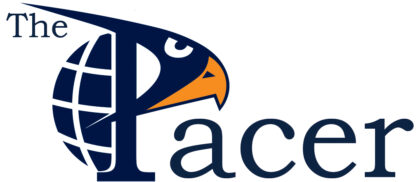The end of 2011 and beginning of 2012 marks the bicentennial of the 1811-1812 New Madrid Earthquakes.
This event not only affected the southern people of the 17th century, but it was something that would affect all generations to come, changing the very geology of the Mississippi River Valley and creating Reelfoot Lake.
“It started December 16, 1811 and a series of earthquakes … continued through January and to February. There were probably about 200 earthquakes over that two-month period that were a magnitude 6 or above. They were huge; it would have been terrifying to live here then,” UTM geology professor Stan Dunagan said.
Over the years, geologists have attempted to learn more and more about the New Madrid area and the event of 1811-1812. However, Dunagan, says there are still many gaps in the story.
“We don’t understand completely how we got three large magnitude quakes. There’s a couple of different hypothesizes that maybe they each triggered each other and that there was just so much stress built up in this seismic zone that there was a big earthquake that released a bunch.
The other thing that makes our area unique and very different from California is that we’ve got lots of sediment around here. It’s a long way to rock and even when we do get to rock, it’s pretty soft sedimentary rock as opposed to igneous or metamorphic rock, so the seismic waves get amplified,” Dunagan said.
According to the U.S. Geological Survey, geologists not only have attempted to collect data revealing information about the specific quakes of 1811-1812, but they have found, by looking at pre-historic sand blows, that earthquakes similar to these occurred around 1450, 900 and 300 A.D, revealing a pattern.
This pattern shows an important element – these quakes were not just a thing of the past, but they are something that continues to be a risk today.
“There is about a seven to 10 percent chance in the next 50 years that you could have a large magnitude earthquake, like a 7.5 to 8 magnitude. There’s an even better chance for a magnitude 6 in the next 50 years, a 25 to 40 percent chance. … A magnitude of 6 is still going to cause a significant amount of damage such that, here around campus, you’d have significant exterior damage to the buildings; glass would be broken, bricks cracked, etc.,” Dunagan said.
He added that if massive tectonic activity like that of 1811-1812 occurred again, more than just a single area would be affected.
“If this earthquake is big, it’s going to hurt western Tennessee, southeastern Missouri, western Kentucky and southern Illinois and Arkansas, as well as Mississippi, Alabama and Indiana. You’re looking at probably a total cost of about $400 billion.
“The most recent estimate I saw on the tsunami that hit Japan and all their damage that resulted from the earthquake was only $250 billion, where as ours [would be] $400 billion. So, significant damage, not just here, but spread out over an 8 state area.
This is potentially a $400 billion problem. It would not take near that much money to study this well. Most scientific studies you could do for a couple of million dollars. Anytime you can prepare ahead for a disaster that means it’s going to cost less, whether we’re talking about stress, economic costs, or social costs,” Dunagan said.
On an individual level, Dunagan says, simply making a disaster communication plan can help.
“What I always tell people is, there are very few places that are not prone to an earthquake, so [one of the] things you can do [is] simply have a communication plan. If there was a big earthquake here, how would you get home to your loved ones, how would you get word to your loved ones?
Should they come get you, are you going to go get them? What’s the plan? Hopefully, through this year [of the bicentennial], people can kind of get down some of the basics, the communication plan, how to deal with utilities, insurance if necessary, and any potential medications or supplies they need,” Dunagan said.
One way to prepare is by taking place in the Great Central U.S. ShakeOut drill on February 7, 2012. Through this program, citizens will learn about earthquake preparedness and the history of the New Madrid fault zone. To learn more, visit the ShakeOut web site, http://www.shakeout.org/centralus/.






